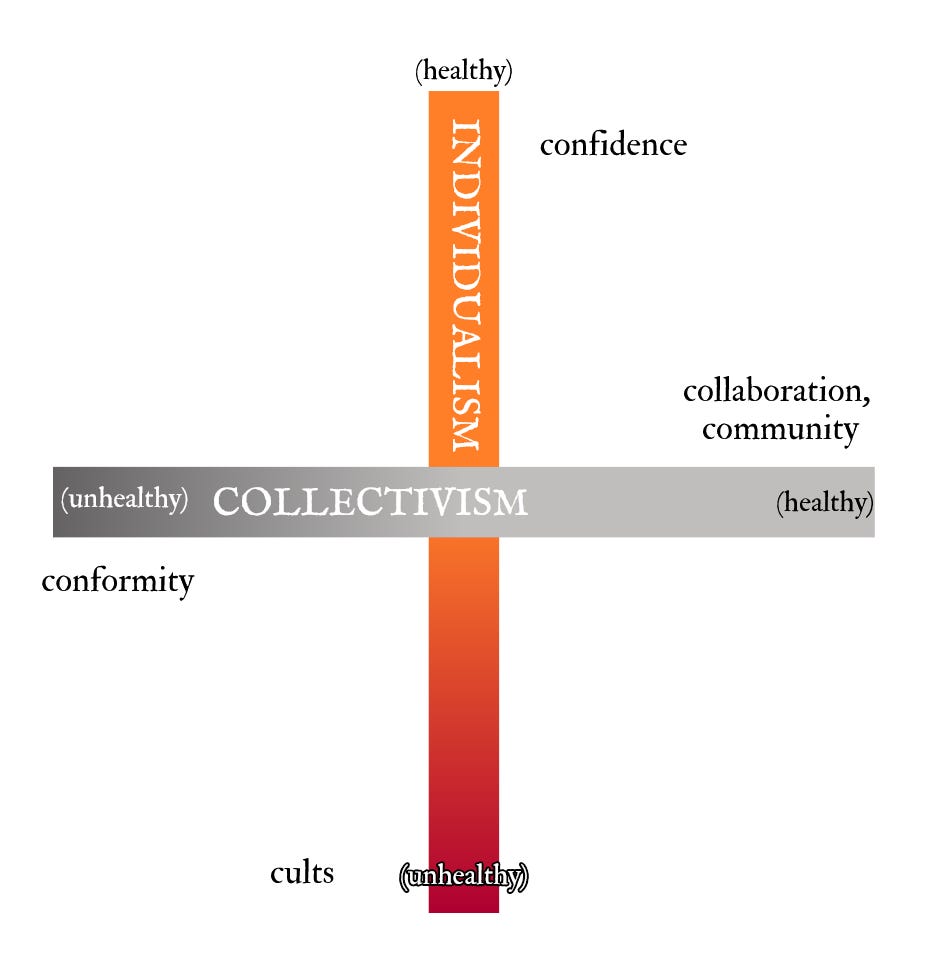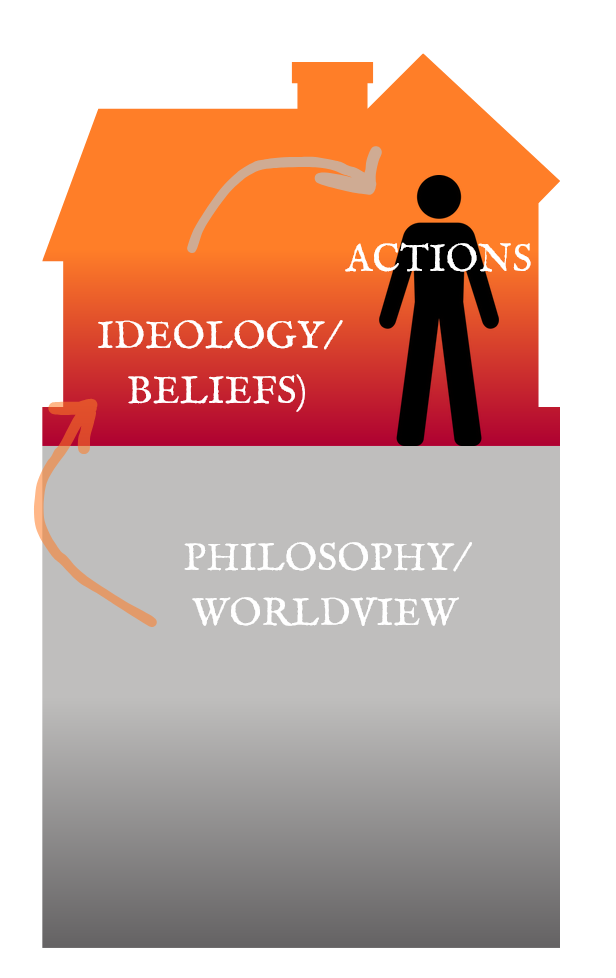The Foundations of Thought
being materialistically honest with your beliefs in a world that loves appearances.
Today’s post involves Marie Antoinette, Avatar, and doubting everything you know. (It was originally about studios and creative spaces, but you’ll have to wait a bit for that one.) **NOTE: this post is long and covers a variety of topics. I promise I tie it all together at the end.
The reference photo that wasn’t.
So, I was working on a drawing an office from this reference photo and kept noticing things that made me go, hmm that’s interesting. I spent several years fascinated with interior design, and between reading my mom’s design materials and watching my dad remodel houses, I’ve absorbed a knowledge of furniture styles and how houses work under the drywall and shiplap and finished surfaces.
As I sketch away on this photo, I’m intrigued by the light fixture. It has a traditional vibe to it, but the shape is unfamiliar to me. I assume it’s a custom piece and keep drawing. Then as I sketch the desk I wonder about the drawer placement. There’s an extra drawer that, as much as like drawers, seems off center and out of place. Typical desks just aren’t made like that. The chair is what gets me. I know what chairs look like and how they function. This chair is slanted weirdly and the arm rests are both on the far side of the chair. The legs are also turned in a way that does not match any traditional style I know. I look at the bookshelves and note that they are behind the desk. Which could be a really neat custom build, but some of the shelves are partially boarded over and the space just really isn’t usable.
This picture betrays the weaknesses and potential dangers of AI.
The underlying reason AI images looks strange.
While the armrests are the only technical mistake AI made in this picture, we can see a few other issues. AI has no concept of tradition when it renders traditional looking furnishings, for example, how chair legs are historically made or different styles of light fixtures. It has no idea how things are made, for example, when it depicted a custom built-in bookshelf that wastes a ton of space. The AI has no concept of something being on the other side of that wall, unlike a human familiar with living in a house. And it has no idea how things are used, since it boards in books on a shelf.
But it sure looks good at first glance!
Form follows function: Designs can’t just “look nice,” they need a practical foundation.
The first design principle every designer should learn is form follows function. This means the what something looks like (form) is secondary to what something does (function.) The purpose of a building, room, or object should be the starting point for its design.
What! You may say. I thought the point of design was to make something look nice!
In many instances, however, something that’s designed to function well also ends up being aesthetically appealing. (This points to the beauty in the world being designed by a logical omnipotent God.) We see this in musical instruments. They are designed to produce the best sound that they can (function,) but by following rules of harmonics and math and how sound works, they also end up looking beautiful (form.) It’s the same for airplanes. Do engineers start out by trying to create something beautiful? No, they’re trying to create something that can fly. But when they follow the math rules and patterns (shameless title drop, yes this is where I conceived the name of my blog) they create planes that appeal to our sense of beauty.
AI has no life experience and no sense of beauty. It’s generating what it’s told we want. Humans have life experience and a sense of beauty. Yet… we still focus on outward appearances and trying to be what we’re told others want. We’re guilty of being artificial and not genuine.
Designs without a foundation are materially dishonest.
Things that are not genuine tend to rub humans the wrong way. Typefaces like Comic Sans and Papyrus (used in Avatar for even the subtitles.1) generate hate for looking like something they’re not. (specific forms of handwriting with conventional uses.) We see this in building materials like imitation marble and granite, and plastic sheets embossed to look like tiles. We see this in distressed jeans, where companies charge you more when they use pumice, acid, and fabric eating bacteria to wear out your jeans. (In the past, teenagers this themselves with toilet cleaner...or just plain playing outside.)
Designer, philosopher, and typeface nerd
uses the term material dishonesty to explain why we don’t like things that try to look like something they’re not. There’s a sting of deception, because like it or not, truth is ingrained in us as important, even when it’s something as small as fake wood. We want truth. (That’s why people cling so tightly to “their truth” …truth is easily as important to the human psyche as oxygen is to the body… even when people try to circumvent truth— “truth is whatever you want it to be”— they’re still deeply attached to the concept.)This surface level dishonesty creeps into other areas of our lives.
But then we look at humans and social media, where we’re pressured to be fake and where appearances are all that matter. And this isn’t a thing that can be swept under the rug. The average user of social media spends over 2 hours a day on social media. That’s the equivalent of one month out of every year. Yeah…
Social media at its worst is fake and toxic. At its best, it’s still targeting emotions and outward appearances. Even recent trend shifts to “rustic” “traditional” and “do-it-yourself” have been criticized for being unrealistic and misleading in how people present themselves on social media. The discussion around trad wife influencer Ballerina Farm illustrates this. Pretending to be rustic had been around for ages: Marie Antoinette had a recreational farm where she could dress up like a peasant and milk cows for fun. But it’s not genuine, it’s not authentic. And Marie lost her head for it.
Individualism vs. collectivism
One reason that well-intentioned people prioritize outward appearances is the social need to fit in. In every healthy person, there’s a tension between trying to fit into the ingroup by looking good for others and remaining an individual, unique person.
Individualism is valuing independence and personal accomplishments. Collectivism is working to meet the group’s interests and to fit in with culture.
We’re social beings and need community. We’re naturally going to get ideas from and imitate others. But this can be done in a healthy way, where through cooperation, a variety of ideas are produced, instead of an unhealthy way where ideas all merge into a mindless mass of conformity.
Individualism and collectivism aren’t two ends of a spectrum. They’re two spectrums (spectri?) that form a matrix. A person can have a healthy or unhealthy amount of both.
A healthy amount of individualism leads to discernment, making unique choices, and confidence in oneself. A healthy amount of collectivism leads to teamwork and a thriving community that supports each other. Unhealthy levels of individualism lead to either ego or gullibility. Unhealthy levels of collectivism result in being fake and trying to look good for other people.
philosophy (worldview) → ideology (beliefs) → actions
Just like how dishonesty in physical things bothers us, so does dishonesty in people. One of the reason people swing towards the unhealthy side of the matrix is because they don’t have a good foundation for what they believe.
Every human being has a set of ideas they have as a foundation. This is their philosophy or their worldview. One of the problems with conforming collectivism is that people develop a ideology with little to no basis for their worldview. This is like building a house without a foundation. It looks nice, and you can live in it quite comfortably when everything is going well. But the moment a storm hits, like a person asking questions you don’t know the answer to, or doubt, or grief, your house starts falling apart.
Both believers and unbelievers do this. It’s why Christians get called out for hypocrisy. And it’s why unbelievers can juggle a bunch of competing ideas. (think “coexist.” ☪️☮️⚧🔯🕯️☯️✝️)
Someone with a strong foundation for their worldview will have a workable philosophy to encompass all of life, including the big questions: Where did I come from? Do I have worth? Who am accountable to? What is my purpose in life? Where do I go when I die?
Staying true to the foundations of one’s worldview: Nietzsche and Descartes
Form follows function. Our actions are going to follow what we ultimately believe. And if we don’t know what we believe, we’ll always be going, “hmm, that doesn’t look right,” just like when we look at an AI image.
Don’t be an artificial human. Don’t be materially dishonest with your actions.
I have great respect for people who stay true to their philosophy. Many of the philosophers that I’ve studied that came up with secular philosophies couldn’t stomach living with the ramifications of their philosophies. Their actions did not remain consistent with what they espoused.
Friedrich Nietzsche is famous for the statement “God is dead.” That’s what many people know him for, and that’s what many people quote him as saying.
Do you want to know what the actual quote says? (Hint: yes. Yes you do.)2
“God is dead! God remains dead! And we have killed him! How shall we console ourselves, the most murderous of all murderers? The holiest and the mightiest that the world has hitherto possessed, has bled to death under our knife,—who will wipe the blood from us?”
—The Madman, Friedrich Nietzsche
Nietzsche was so close to the truth. Paul too, brings up the death of God and examines the consequences of this idea.
12 Now if Christ is proclaimed as raised from the dead, how can some of you say that there is no resurrection of the dead? 13 But if there is no resurrection of the dead, then not even Christ has been raised. 14 And if Christ has not been raised, then our preaching is in vain and your faith is in vain. 15 We are even found to be misrepresenting God, because we testified about God that he raised Christ, whom he did not raise if it is true that the dead are not raised. 16 For if the dead are not raised, not even Christ has been raised. 17 And if Christ has not been raised, your faith is futile and you are still in your sins. 18 Then those also who have fallen asleep in Christ have perished. 19 If in Christ we have hope[a] in this life only, we are of all people most to be pitied.
—1 Corinthians 15:12-19
Nietzsche was consistent enough with his worldview that it led him to its natural end, insanity: he went crazy at the end of his life. He was also close enough to Biblical truth that I believe it’s highly possible that he converted late in life.
Rene Descartes is another philosopher who is famous for questioning God and even his own existence. (Cogito ergo sum) But his aim was not to escape responsibility, instead he was searching for irrefutable knowledge to build the foundation of his worldview.
“for owing to the fact that the destruction of the foundations of necessity brings with it the downfall of the rest of the edifice, I shall only in the first place attack those principles upon which all my former opinions rested.”
-Rene Descartes
Through Descartes’s vicious doubting and cynical skepticism, he broke his assumptions down, and logically built them back up through his principles. For further reading, his Principles of Philosophy3 is a very accessible work on the subject of foundations. Here are a few of them that touch on the topic of this article.
1. The seeker after truth must once in his lifetime doubt everything that he can doubt.
3. But this doubt shouldn’t be carried over into everyday life.
13. The sense in which knowledge of everything else depends on knowledge of God.
14. Necessary existence is included in our concept of God—from which it follow that God exists.
16. To some people it’s not obvious that God must exist; that’s because of preconceived opinions.
Conclusion
Do you have a workable philosophy that is able to consistently encompass all of life’s situations? In other words, how do you hold up when things get hard?
At this point I’ve probably lost people because of the philosophy… but I promise it’s worth the work to try to understand.
Philosophy is just the underlying beliefs that fuel your actions. Many people’s worldviews are like that AI image… they appeal on the surface level, but don’t hold up under further inspection.
They don’t have an understanding of tradition. Where are your thoughts coming from? There’s nothing new under the sun, and everyone has a heritage of philosophy, whether they realize it or not. My philosophical DNA includes the Apostle Paul, Descartes, G.K. Chesterton, and R. C. Sproul, among others. (If you have not been intentional about your thoughts, they likely trace back to Karl Marx, due to his massive and widespread influence on modern thought.)
These people’s worldviews don’t know how things are “made.” They struggle with recognizing, understanding and responding to cause and effect. They don’t see how the contents of their foundation, or their lack of one, affects their actions.
These people don’t know how thoughts are used. They are risk of being swayed by people who don’t have their best interests in mind. It’s not even subtle anymore. We literally call them influencers. We know that there are people whose entire job is to sell us something. We’ve seen politicians tell us anything to get our votes. We have a 2000+ year history where wars and revolutions have been fought over thoughts. We’ve seen the slow but intentional creep of philosophies and worldviews that are bad for us, that trap us. Did you know that U.S. President Franklin Delano Roosevelt had many of the same ideas as Adolf Hitler? People don’t understand discernment.
Be a genuine human, not an artificial one. Have a materially honest worldview, one that can support you through doubt and hard times. Know why you believe what you believe.
Interested in this topic? Upgrade to paid (just $2 a month) to read my other posts on the effect of AI on artists and the importance of remaining human.
Principles of Philosophy - free PDF








